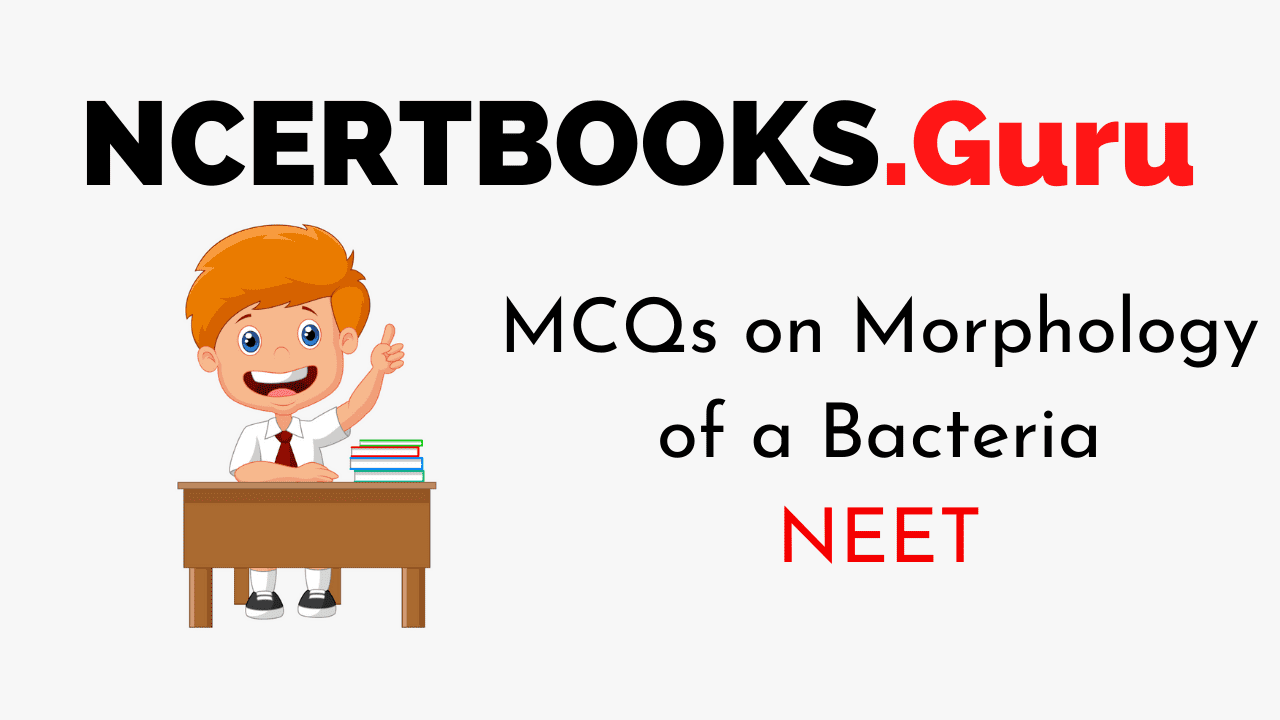NEET Biology is the scoring paper in the medical entrance examination. Here, you will discover the NEET Biology MCQ Questions for all Concepts as per the latest syllabus. Practice more on a regular basis with these NEET Biology objective questions on air pollution and improve your subject knowledge & problem-solving skills along with time management. NEET Biology Morphology of a Bacteria Multiple Choice Questions make you feel confident in answering the question in the exam & increases your scores to high.
MCQs on Morphology of a Bacteria
1. Which of this bacteria is resistant to penicillin as it lacks a cell wall?
(a) Spirochetes
(b) Cyanobacteria
(c) Mycoplasmas
(d) Bdellovibrios
Answer
Answer: (c)
2. What is a cluster of polar flagella called?
(a) Petritrichous
(b) Monotrichous
(c) Amphitrichous
(d) Lophotrichous
Answer
Answer: (d)
3. Which of these is a cocci occurring in single or pairs?
(a) Diplococci
(b) Streptococci
(c) Tetracocci
(d) None of the above
Answer
Answer: (a)
4. Flagella in bacteria enable them to
(a) reproduce
(b) locomote
(c) Thrive in nutrient agar
(d) Adhere to tissue surfaces
Answer
Answer: (b)
5. This about cell wall of gram-positive bacteria is true
(a) cell wall comprises of many layers
(b) the cell wall is thicker than the associated gram-negative bacteria
(c) Cell wall comprises of teichoic acids
(d) All of the above
Answer
Answer: (d)
6. What is Chemotaxis?
(a) Swimming towards a bacteria
(b) Swimming away of a bacteria
(c) In the presence of a chemical compound, swimming towards or away of a bacteria
(d) None of these
Answer
Answer: (c)
7. Which of these is exposed on the outer surface of a gram-negative bacterium?
(a) Braun lipoprotein
(b) O-antigen of lipopolysaccharide (LPS)
(c) Polysaccharide portion of lipoteichoic acid (LTA)
(d) Electron transport system components
Answer
Answer: (b)
8. The covalent bond which links the cell walls of gram-positive bacteria containing two modified sugars – N – acetylmuramic acid (NAM) and N-acetyl glucosamine (NAG) is
(a) glycosidic bond
(b) 1,4-glycosidic bond
(c) 1,6-glycosidic bond
(d) glycosidic bond
Answer
Answer: (b)
9. Which one of these has a Chinese letter arrangement?
(a) Clostridium tetani
(b) Mycobacterium tuberculosis
(c) Bacillus anthracis
(d) Corynebacterium diphtheriae
Answer
Answer: (d)
10. This is analogous to mesosomes of bacteria
(a) Golgi apparatus of eukaryotes
(b) Lysosomes of eukaryotes
(c) Mitochondria of eukaryotes
(d) None of the above
Answer
Answer: (c)
